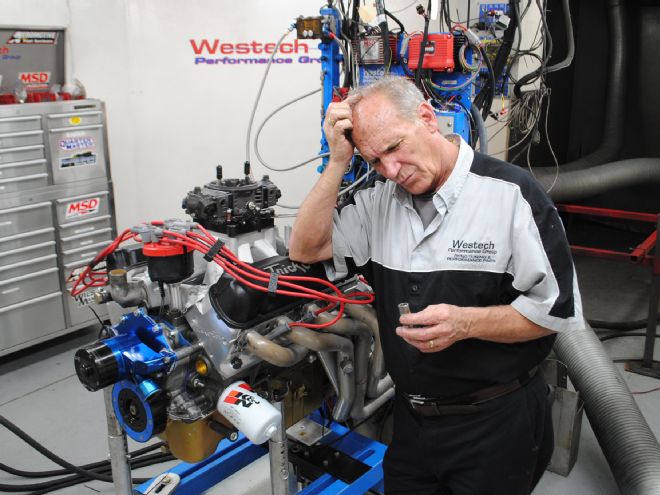
Hydraulic roller cams have plenty going for them, including power, reliability, and reduced friction. Heck, even the OEMs have embraced the benefits of hydraulic roller cams. Often thought of as the middleman between flat-tappet and serious solid roller cams, hydraulic roller profiles have recently narrowed the gap between street and race rollers.
Time was when you thought about running high rpm, you immediately stepped up to a solid roller. The problem is that while the solid rollers offer plenty of performance and rpm potential, they are less than ideal for street applications. The necessary lash can wreak havoc on the needle bearings at lower engine speeds. Thanks to recent advances in technology, engine builders and racers can now utilize hydraulic roller cams in high-rpm applications that were once the exclusive domain of solid rollers. As we will discover in this test, sophisticated lifter design and even dedicated cam profiles are only part of the equation, but without them elevated engine speeds would not be possible.
We can obviously start with the lifter itself, but know that hydraulic roller lifters are part of a much larger performance package that make extended rpm possible. Crane Cams, a name long associated with performance valvetrain components, designed its hydraulic roller lifters with improved metallurgy (heat-treated and carburized 8620 steel) that allowed the company to precision-machine the bodies and internal components. These critical tolerances, now measured in microns (0.000000393 inch—yes, six zeros!), all but eliminate the two most common ailments associated with hydraulic roller lifters: lifter pump up and bleed down. According to Crane Cam’s Chase Knight, the bleed-down rate is a function of internal tolerances. Elevated valvespring pressures used for high-rpm applications can apply considerable pressure to the hydraulic mechanism. This pressure can cause the oil to bleed past the tolerances and allow the lifter to collapse. Precise tolerances of the Crane lifter eliminate this possibility.
Unlike lifter bleed down, lifter pump is not cured by the lifter design but rather by matching all of the valvetrain components. Pump up occurs when the pushrod loses contact with the lifter body, allowing the oil pressure to push the plunger up (to take up the preload). Without the preload, the lifter may hold open the valve. Keeping the pushrod in contact with the lifter requires the pushrod to stay in contact with the rocker arm and the rocker to maintain contact with the valve tip. Keeping things in constant contact and operating effectively requires the right combination of cam profile, lifter design, pushrod and rocker weight, and integrity. Of course the valvesprings also play a major role, as they must provide adequate rate and proper harmonics to control the components. Loss of valvetrain control will almost always limit engine speed before the strength of the reciprocating assembly comes into play.
The limiting factor in terms of rpm is almost never the short-block, although it, too, must be up to the task. To illustrate the rpm potential of the Crane hydraulic roller lifer, we built a test motor capable of running safely to 8,000 rpm. Using an aftermarket four-bolt main block, we installed a Scat 3.40-inch forged crank, 5.40-inch forged rods, and Mahle flat-top pistons. The Mahle forged pistons featured generous valve reliefs for our 0.640 lift cam as well as coated skirts and a Total Seal ring package. Contrary to popular belief, aggressive ramp rates and high rpm don’t mix. The cam supplied by Crane for the 8,000-rpm 347 was every bit as important as the precision 36530-16 lifters. The cam profile must be effective not just at lifting and holding open the valves but also at helping to maintain control. The cam profile can help minimize valve loft (where the cam loses contact with the lobe on the opening ramp—usually at the top) or valve bounce (where the lifter slams down on the base circle during the closing ramp). Either situation results in a loss of valvetrain control, so Crane chose our cam accordingly. For specs, the high-rpm, Crane hydraulic roller offered 0.640 lift, a 264/272-duration split, and 110-degree lsa.
Since we planned on running elevated engine speeds, we thought, Why not make some power while we were at it? The Crane-cammed 347 short-block was ready for some other power producers. We added a set of CNC-ported High-Port heads from Trick Flow Specialties. Per the name, the TFS head featured 225cc intake ports that flowed 335 cfm. Capable of supporting over 650 hp, the heads were more than sufficient for our power needs. In keeping with our intended engine speed, the heads were set up with a valvespring package from Crane Cams that offered 255 pounds of seat pressure and 610 pounds of open pressures. These are the types of pressure you would normally associate with a solid roller cam, but fear not. They will not harm the Crane hydraulic roller mechanisms. The heads were secured using a set of Fel Pro 1011-2 head gaskets and ARP head studs. Milodon took care of the all-important oiling system with its road-race pan, windage tray, and oil pump. Additional components included a set of Crane hardened pushrods, Gold 1.6-ratio aluminum roller rockers, and an MSD distributor. The crowning glory was the induction system consisting of a single-plane Edelbrock Super Victor intake and a Holley 950 Ultra HP carburetor.
The test was designed to illustrate that the hydraulic roller lifters were capable of reaching 8,000 rpm. But as cool as they are, we know that the lifters were just part of the equation. Working with the cam profile, valvesprings, and remaining valvetrain components, the Crane hydraulic roller lifters did indeed survive the trip to 8,000 rpm.
Equipped with the hydraulic roller components, the High-Port headed 347 produced peak numbers of 546 hp at 7,400 rpm and 435 lb-ft of torque at 5,700 rpm. Had we thought of it ahead of time, we would have liked a larger set of headers and possible more cam duration to push peak power higher in the rev range, but despite making peak power at 7,400 rpm, the combination revved cleanly to 8,000 rpm where it was still producing 522 hp and 343 lb-ft of torque. Does the success of this 347 Ford mean every hydraulic-roller small-block should be Revved Up to 8,000 rpm? Hardly, but it does illustrate that it is indeed possible and that if the lifters (and combo) thrive at 8,000 rpm, just think how long they will last at lower engine speeds!
Power Numbers RPM HP TQ 4,000 288 379 4,500 342 399 5,000 397 417 5,500 431 430 6,000 493 432 6,500 515 416 7,000 540 405 7,400 546 387 8,000 522 343
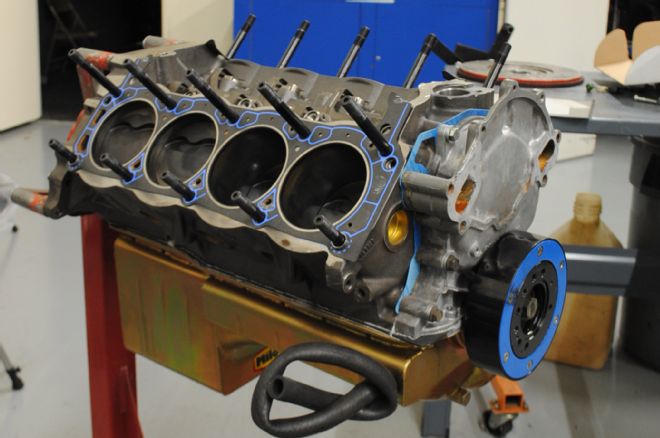
1. The first thing we needed for this 8,000-rpm adventure was a short-block capable of elevated engine speeds. The aftermarket block was filled with a Scat forged 3.4-inch stroker crank and 5.4-inch forged rods.
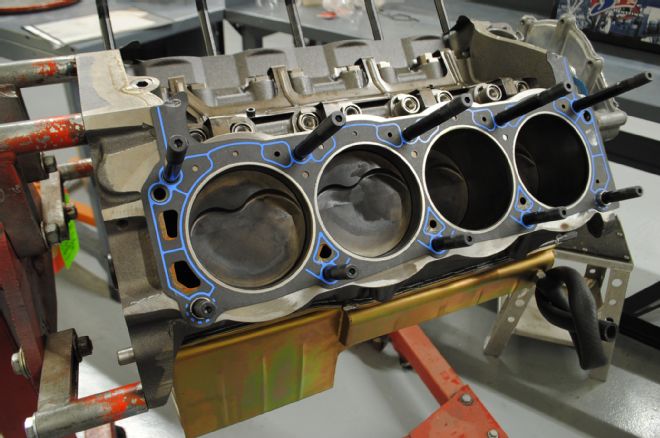
2. The Mahle forged, flat-top pistons featured generous valve reliefs designed for use with our 8,000-rpm cam timing. Note also the 1/2-inch ARP head studs and Fel Pro 1011-2 head gaskets.
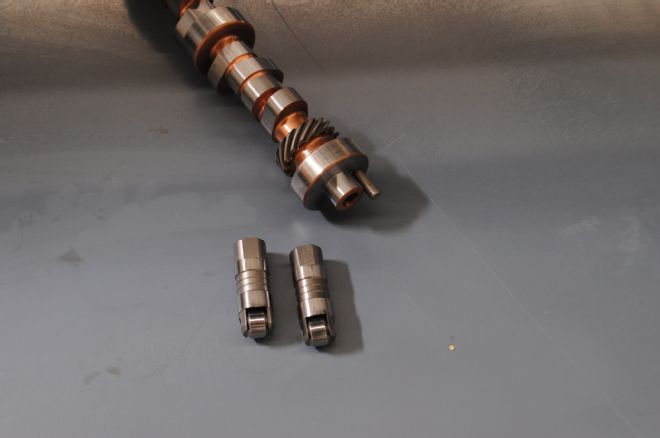
3. Thanks to advanced material and tolerances, these Crane hydraulic roller lifters were capable of insanely elevated rpm potential. Naturally, hydraulic roller lifters were only part of the equation, as Crane also supplied a stable cam profile that offered 0.640 lift, a 264/272-degree duration split, and 110-degree lsa.
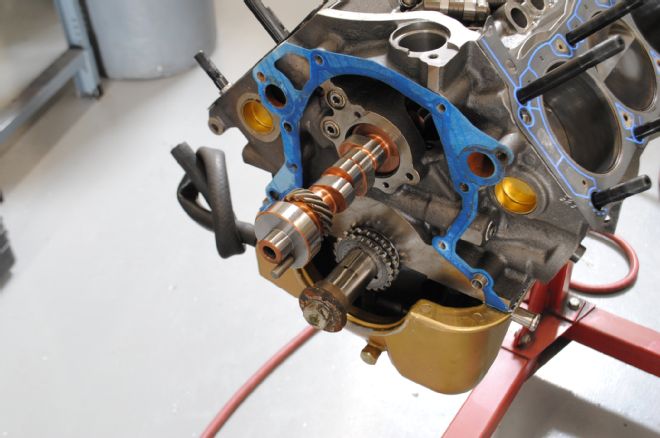
4. The Crane cam was installed into the awaiting 347 short-block. Note the double-roller timing chain and Milodon oiling system.
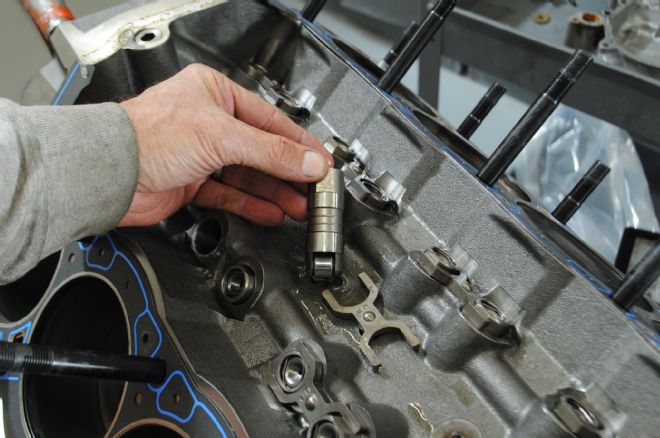
5. After installing the cam, we installed the Crane (drop-in) hydraulic roller lifters. The aftermarket block was designed to accept the factory 5.0L hydraulic roller guides and retainer assembly.
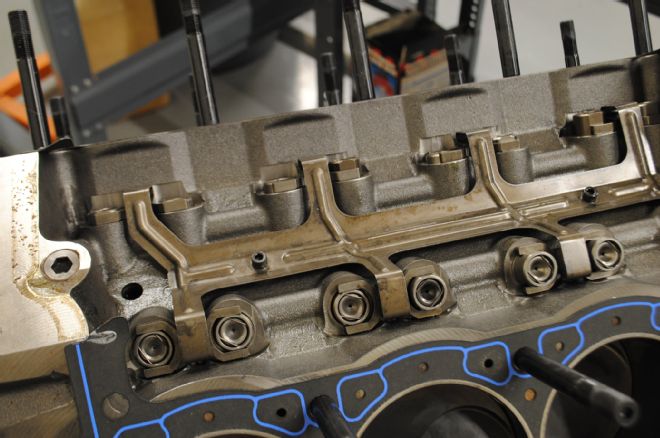
6. What looked like any other hydraulic-roller 5.0L Ford was really an 8,000-rpm assembly in disguise.
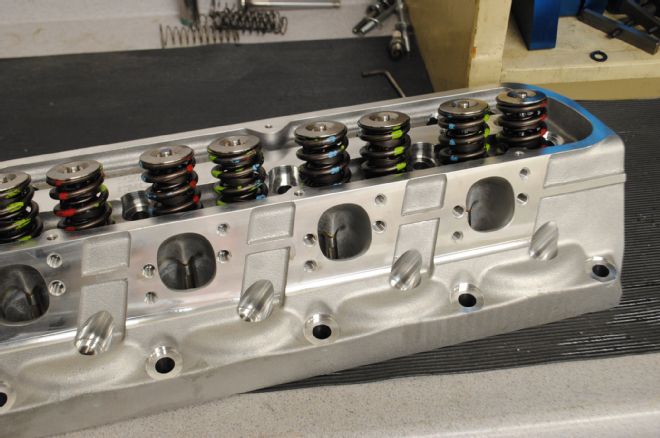
7. The elevated rpm of our test motor required plenty of breathing. These CNC-ported, High-Port heads from Trick Flow Specialties were just what the doctor ordered. The heads also received a set of Crane 96886-16 valvesprings, 99659-16 Ti retainers, and 99465-16 locks.
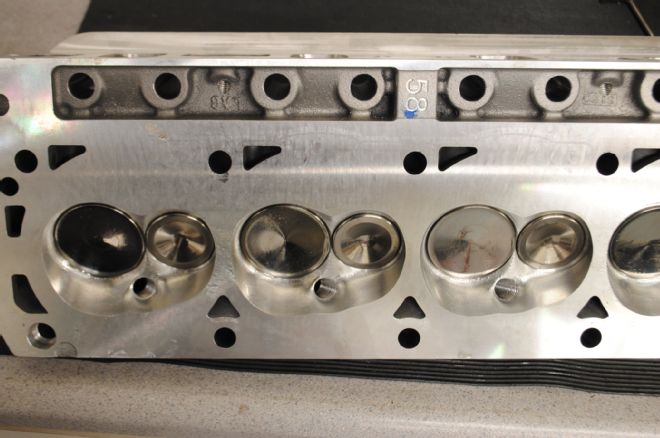
8. The TFS High-Port heads featured not only 225cc intake ports but also small 58cc combustion chambers that housed a 2.08/1.60 valve package. No lightweight titanium here; the stainless-steel intake valves checked in at 130 grams each.

9. Using the Fel Pro head gaskets and 1/2-inch ARP head studs, we installed the TFS High-Port heads onto the awaiting short block.
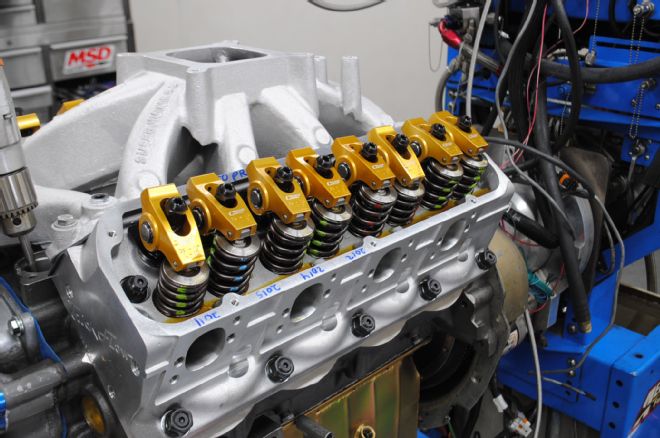
10. Looking to ensure accurate and stable valvetrain geometry, we installed these 1.6-ratio Crane Gold roller rockers. Ideally this setup would have shaft rockers or at least a stud girdle, but the combination pulled all the way to 8,000 rpm with no trouble.
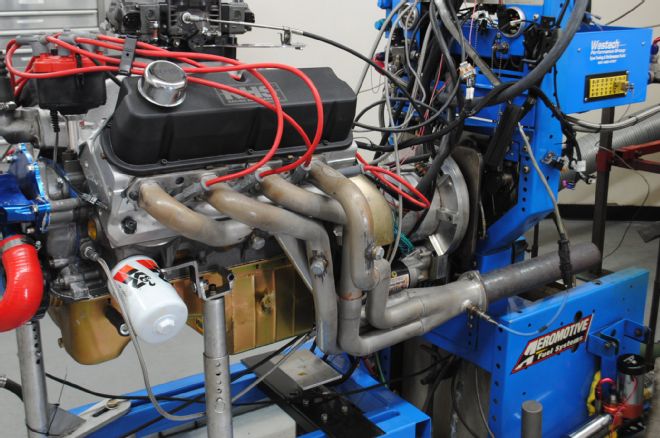
11. Feeding the TFS-headed 347 short-block was an induction system that consisted of an Edelbrock Super Victor intake and a Holley 950 Ultra HP carburetor.
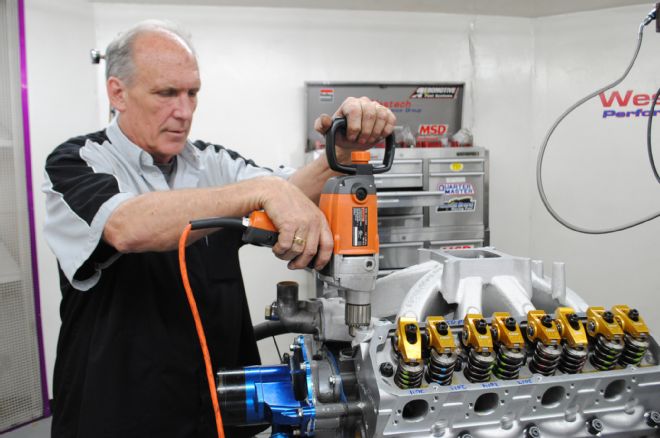
12. Though the 347 short-block had been previous run, we primed the oiling system to lubricate the new cam and lifters.
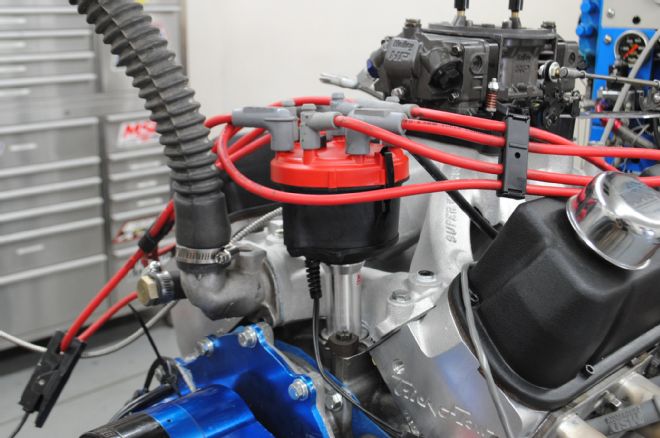
13. Obviously, accurate ignition timing was critical at elevated engine speeds. We enlisted the help of MSD, who supplied this billet Ford distributor along with the cap and plug wires.

14. Designed for a performance Fox Mustang application, these 1 3/4-inch Hooker Super Comp headers were likely undersized for this combination.
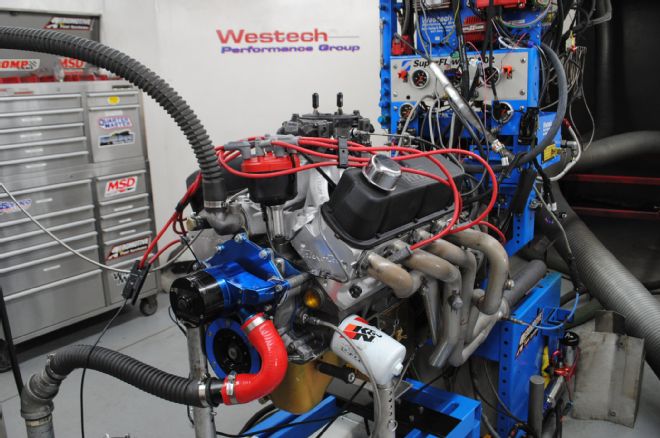
15. With everything buttoned up and ready to rock, we let the hammer fly and snuck up on our eventual goal of 8,000 rpm. The motor made peak power at 7,400 rpm but revved cleanly to 8,000 rpm. The combo could likely use wilder cam timing and larger headers to take full advantage of the newfound rpm capability, but knowing it was capable of 8,000-rpm should add plenty of confidence to all those hydraulic-roller Fords running at just 7,000 rpm (or below).